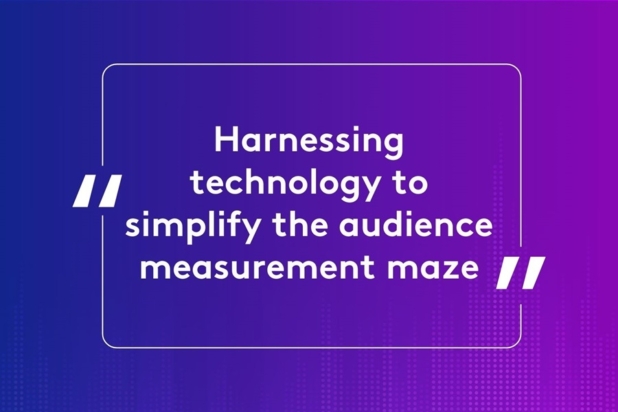As media splinters across platforms and channels, accurately tracking audiences has become increasingly challenging. Discover how with the right tools and expertise directing the data feed can become a streamlined process that delivers actionable insights

Audience measurement is a complex endeavour. As media splinters across a vast array of platforms and channels, accurately tracking audiences has become increasingly challenging for broadcasters, advertisers, and analysts alike – largely due to the overwhelming amount of data generated.
But while this may seem overwhelming, the solution lies in harnessing the power of cutting-edge technology. With the right tools and expertise, the seemingly insurmountable task of directing the data feed can become a streamlined process that delivers the necessary actionable insights.
Let’s take a closer look at how technology is revolutionising the way we handle data by first examining the explosion in its volume.
Today, with viewers consuming video content across different platforms and devices, data is sourced from multiple places, including panels, streaming services, smart TVs, operator data, and first-party platforms.
However, sheer data volume doesn’t automatically translate into meaningful insights. This is where calibration technology comes in, ensuring data from various sources is consistent, comparable, and accurate.
This is accomplished through several processes, such as data harmonisation, which aligns data from different sources to ensure consistency in units and definitions. Weighting assigns appropriate values to data based on reliability and representativeness, while error correction, often using statistical modelling or machine learning, identifies and addresses errors or biases.
By calibrating voluminous data, we can ensure that audience measurement is accurate, comparable, and reliable, regardless of the source. This is essential for making informed decisions about media planning, advertising, and content strategy.
Meanwhile, for projects like CFlight in the UK, which offers a unified TV advertising metric across all viewing platforms, additional layers of calibration also ensure measurement systems can adapt to regional market nuances without losing their global integrity.
The role of technology in audience measurement
Technology is also the key to turning complex data into actionable insights. In the past, measurement systems were simpler and more linear. Today, the challenge is to build systems that can handle the volume, variety, and complexity of audience data while still producing meaningful results in real time.
Kantar Media’s audience measurement technologies are designed to manage large datasets while preserving the necessary granularity for actionable insights. By using ‘multi-threaded’ environments, these tools break down complex data into smaller, manageable parts that can be processed simultaneously. This method improves efficiency, speeds up analysis, optimises resource use, and scales easily to handle growing datasets without sacrificing performance or detail.
At the heart of this is the cloud, which plays an increasingly crucial role in audience measurement, particularly through private cloud environments designed for scalability and flexibility. For example, the Audience Cloud processes raw data into various applications, specifically tailored for media measurement. Its capacity to manage large data sets and integrate third-party tools makes it a powerful infrastructure for supporting global audience measurement efforts.
Privacy and compliance
As data sources multiply, so do concerns around privacy. Converting device-level data into person-level insights while adhering to privacy regulations is a significant challenge and drives the need for robust solutions across the industry.
One of the stand-out privacy enhancing technologies is the data clean room, which helps organisations merge data from multiple sources while safeguarding personal information.
Kantar Media’s use of such technologies reflects a commitment to creating future-proof solutions that meet regulatory requirements, particularly as AI and machine learning become more prevalent in measurement practices.
Collaboration and innovation
One of the most positive developments in audience measurement is the spirit of collaboration between different players in the industry. Projects like CFlight and Origin demonstrate that, when broadcasters, tech companies, and industry bodies come together, they can create solutions that benefit the entire ecosystem.
Look deeper, however, and the success of these collaborative projects highlights an important trend: while the complexity of audience measurement is increasing, there is a growing demand for simplicity in the tools we use. Solutions must be user-friendly, intuitive, and designed with the end user in mind. Cross-industry collaboration and shared innovation play a pivotal role in balancing the varied needs of stakeholders while developing robust systems that serve both advertisers and media owners.
This is an important point to remember as the media landscape and its measurement technologies evolve, deepening their investment and utilisation of AI and machine learning to interpret and act on audience data. There are plenty of challenges ahead of us, but by embracing the right technology, fostering collaboration, and prioritising privacy and quality, the media industry can ensure its measurement future remains robust, secure and of course, accessible.
Learn more about how TechEdge apps and software can maximise the power, accessibility and actionability of your datasets here.